Abstract
For the enumeration of viable vegetative cells and spores of Clostridium perfringens, noncommercial (laboratory prepared) sulfite-polymyxin-sulfadiazine (SPS) agar, tryptone-sulfite-neomycin (TSN) agar, and Shahidi-Ferguson-perfringens (SFP) agar were statistically compared to SPS agar without antibiotics. The selectivities of these four media were also evaluated on the basis of their ability to inhibit the growth of pure cultures of a variety of other organisms. The average recovery of vegetative cells of 10 strains of C. perfringens with SFP agar was not significantly higher than with SPS agar with 104 organisms per g, but with 106 organisms per g it yielded significantly higher recoveries than SPS agar. TSN agar yielded significantly lower recoveries at both inoculum levels. SFP agar gave significantly higher recoveries of spores than SPS and TSN agars. Average plate counts of spores in SFP agar were 75% as high as in SPS agar without antibiotics, but only 45% of the spores grew in SPS agar and 25% in TSN agar. TSN agar was the most selective of the three media, but the selectivity of SPS agar approached that of TSN agar under the test conditions. SFP agar, which was the least selective of the media, allowed growth to some extent of nearly all of the facultative anaerobes tested.
Full text
PDF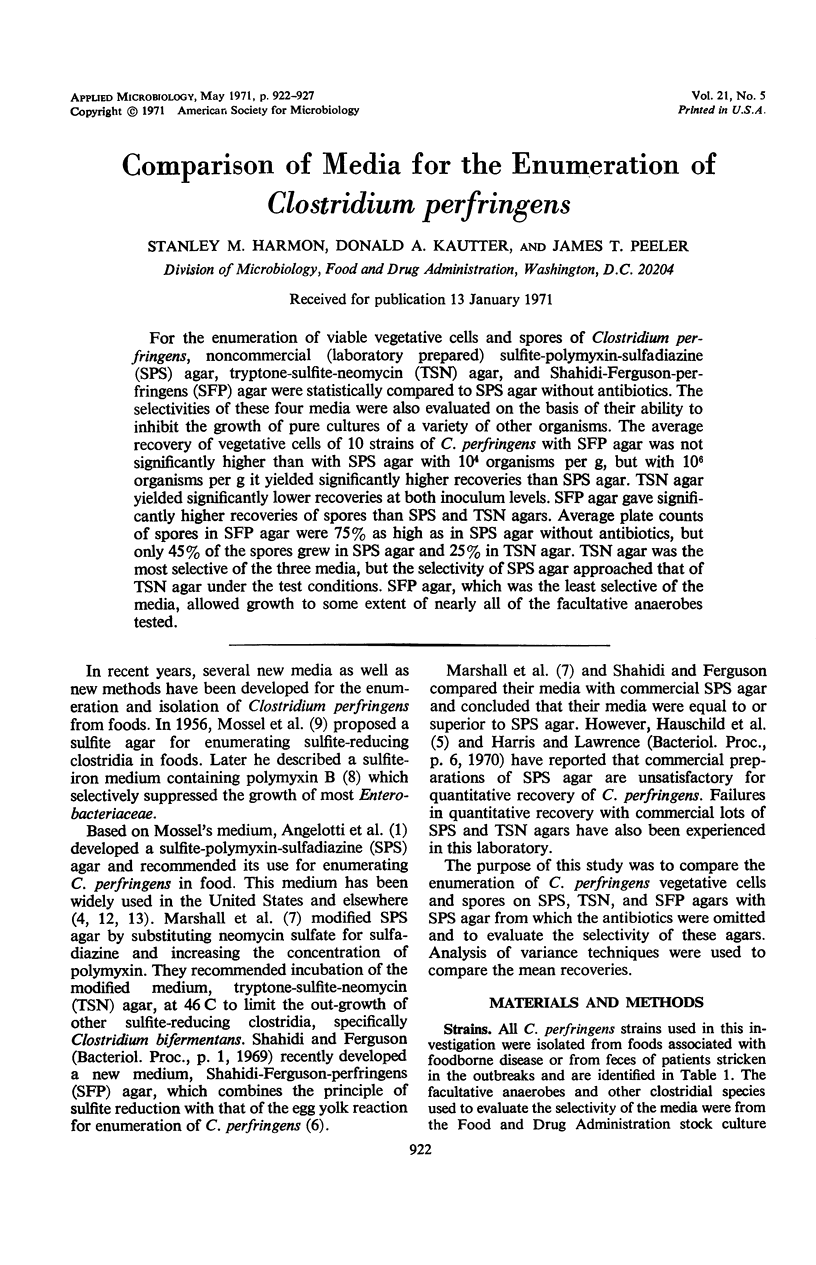
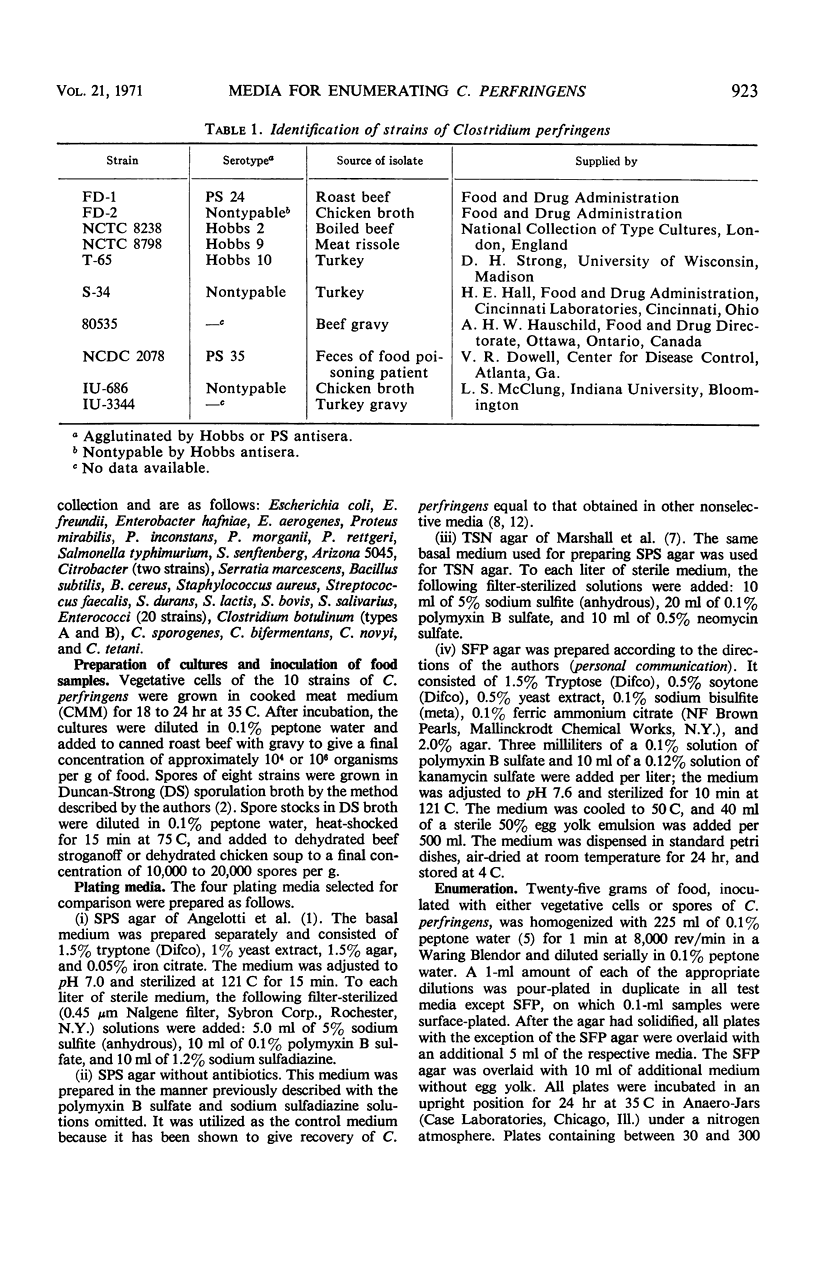
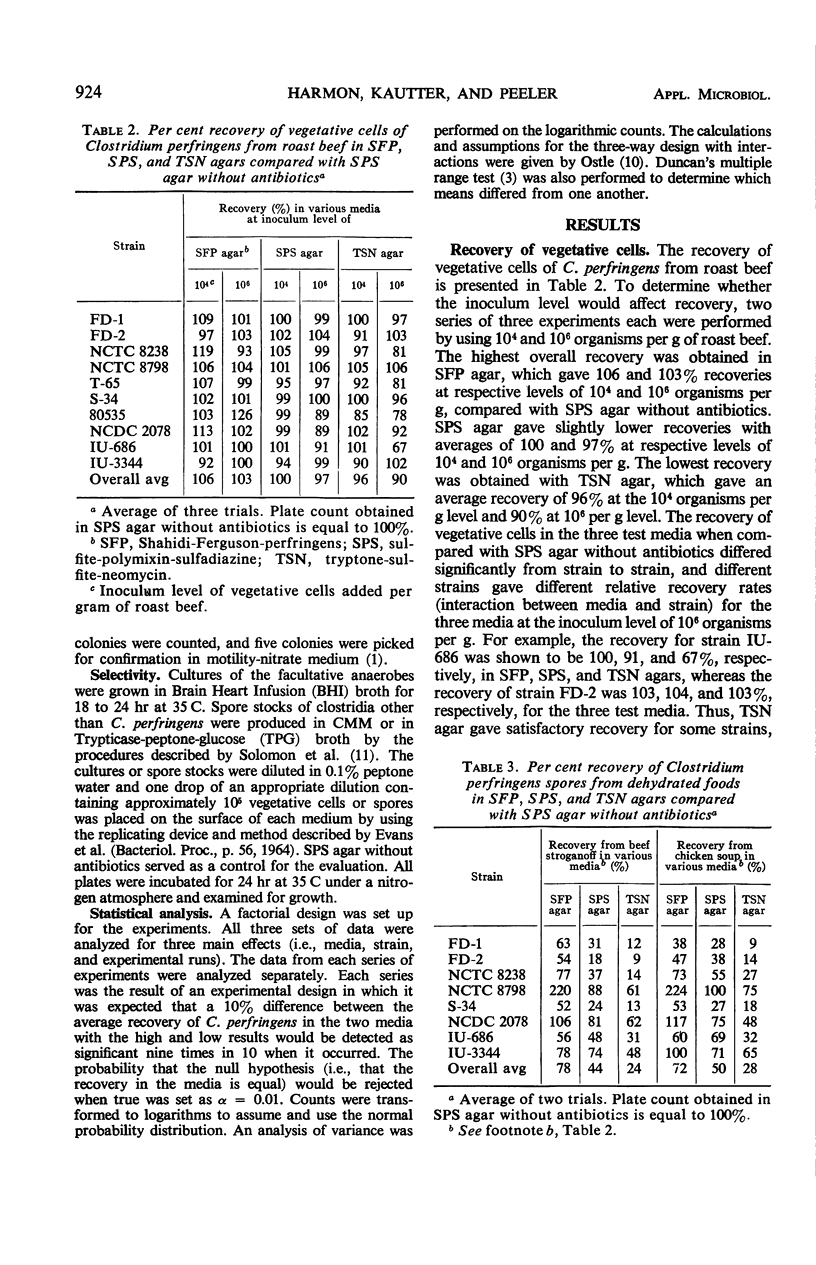
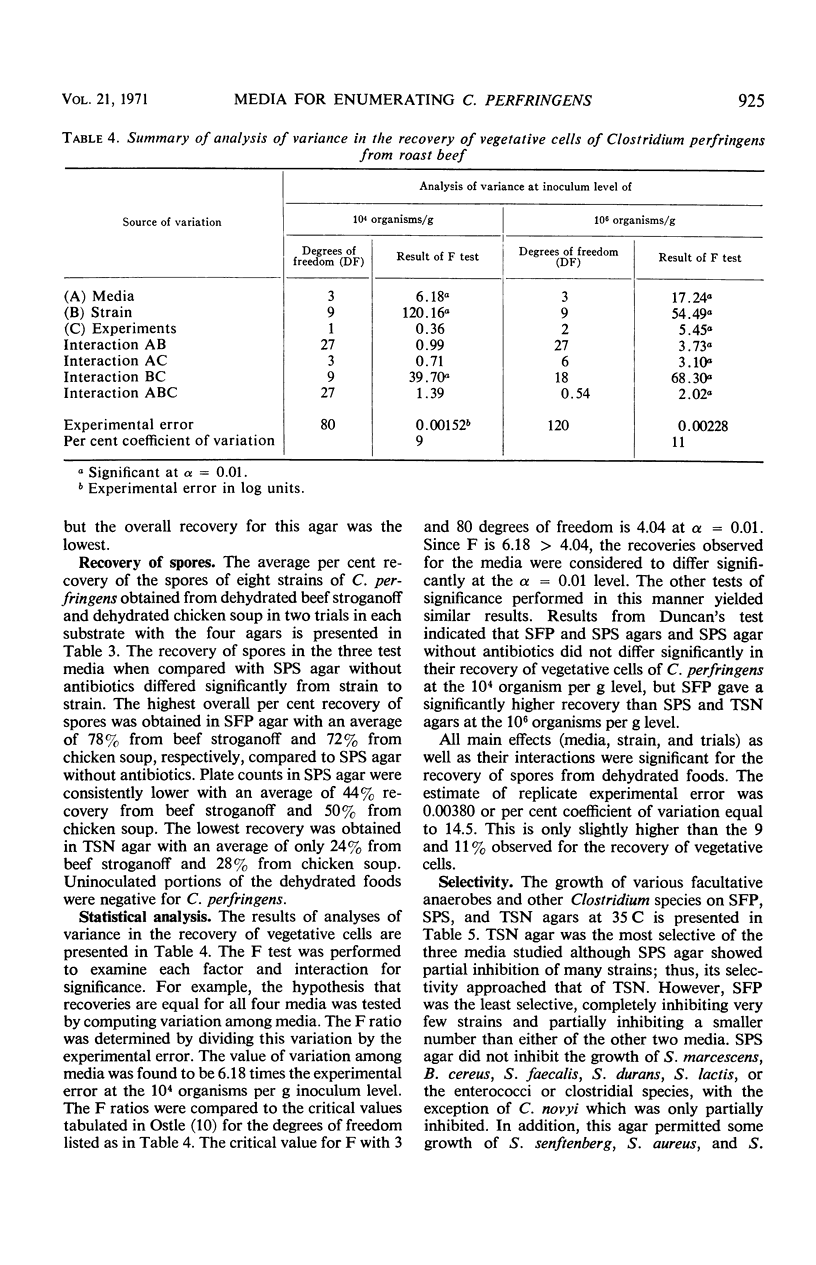
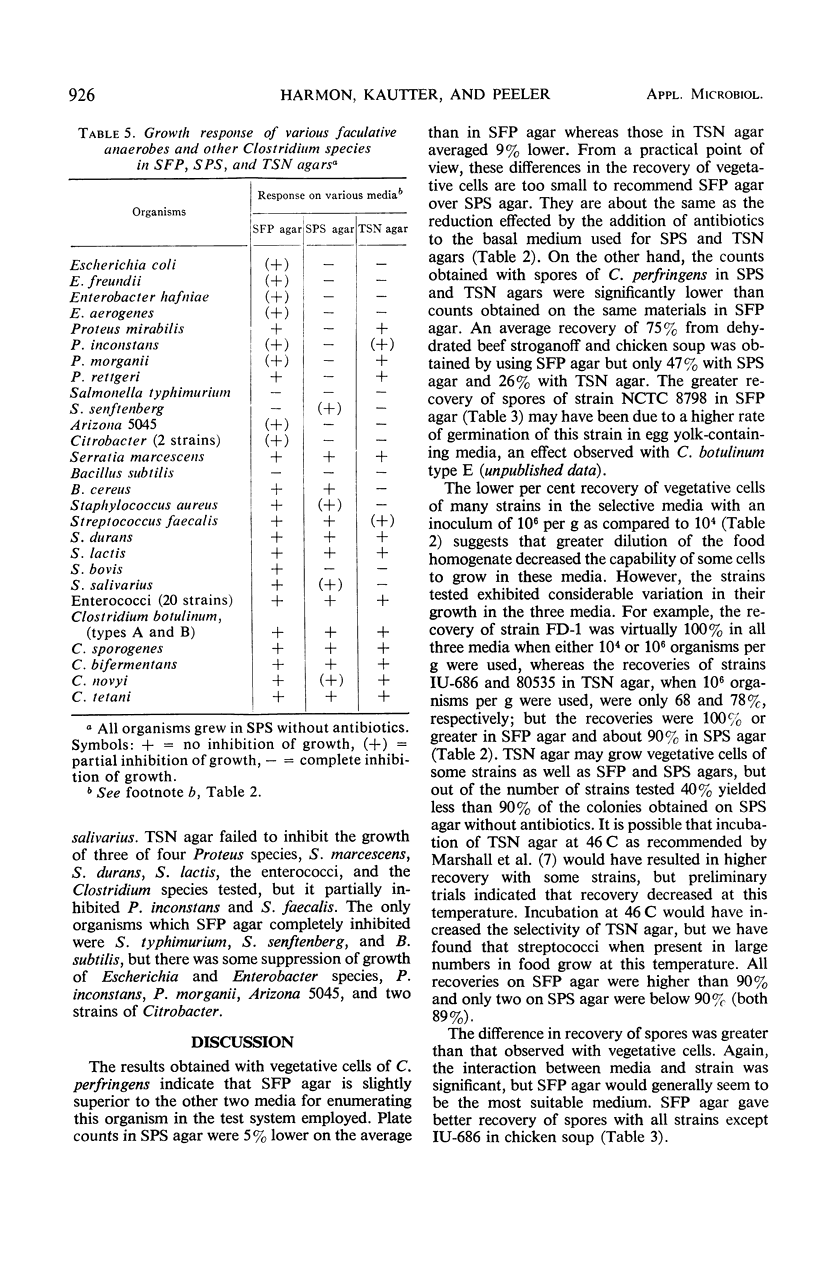
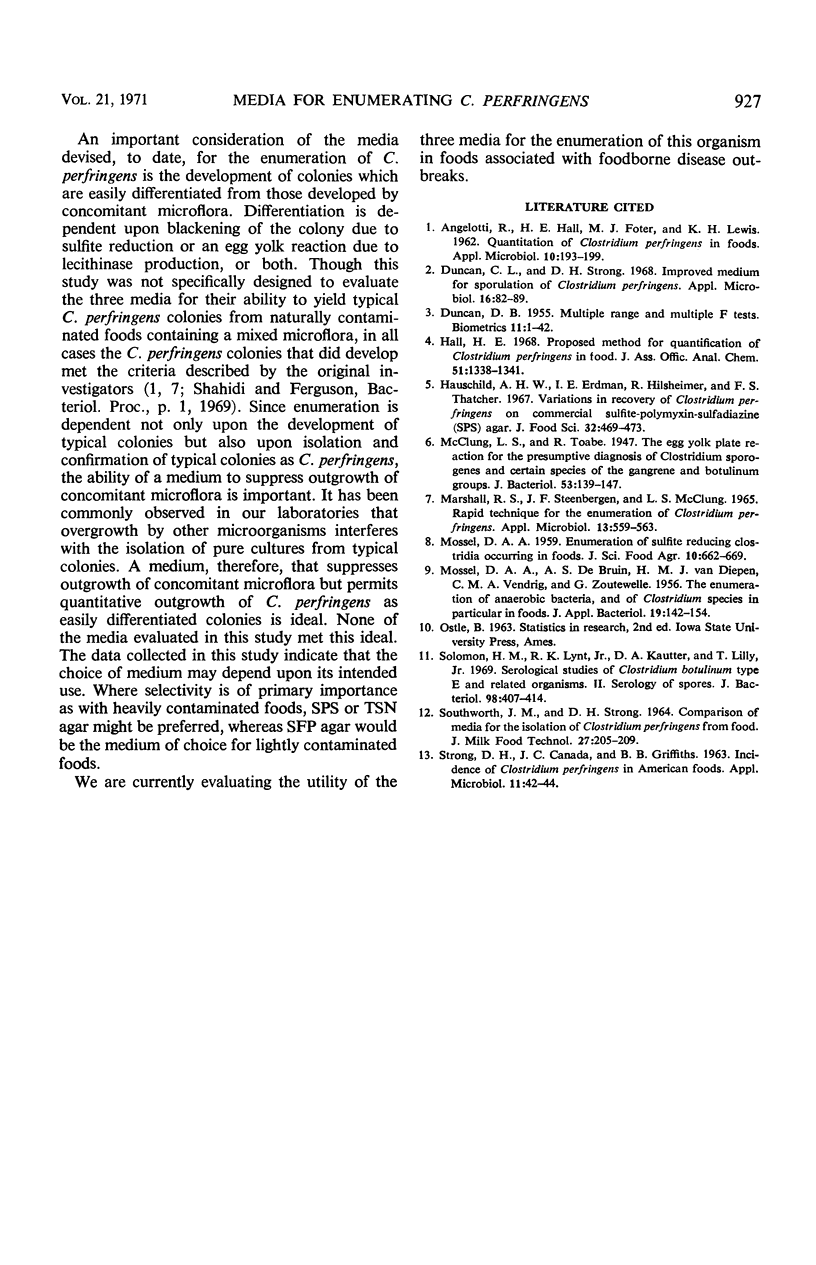
Selected References
These references are in PubMed. This may not be the complete list of references from this article.
- ANGELOTTI R., HALL H. E., FOTER M. J., LEWIS K. H. Quantitation of Clostridium perfringens in foods. Appl Microbiol. 1962 May;10:193–199. doi: 10.1128/am.10.3.193-199.1962. [DOI] [PMC free article] [PubMed] [Google Scholar]
- Duncan C. L., Strong D. H. Improved medium for sporulation of Clostridium perfringens. Appl Microbiol. 1968 Jan;16(1):82–89. doi: 10.1128/am.16.1.82-89.1968. [DOI] [PMC free article] [PubMed] [Google Scholar]
- MARSHALL R. S., STEENBERGEN J. F., MCCLUNG L. S. RAPID TECHNIQUE FOR THE ENUMERATION OF CLOSTRIDIUM PERFINGENS. Appl Microbiol. 1965 Jul;13:559–563. doi: 10.1128/am.13.4.559-563.1965. [DOI] [PMC free article] [PubMed] [Google Scholar]
- McClung L. S., Toabe R. The Egg Yolk Plate Reaction for the Presumptive Diagnosis of Clostridium sporogenes and Certain Species of the Gangrene and Botulinum Groups. J Bacteriol. 1947 Feb;53(2):139–147. doi: 10.1128/jb.53.2.139-147.1947. [DOI] [PMC free article] [PubMed] [Google Scholar]
- STRONG D. H., CANADA J. C., GRIFFITHS B. B. Incidence of Clostridium perfringens in American foods. Appl Microbiol. 1963 Jan;11:42–44. doi: 10.1128/am.11.1.42-44.1963. [DOI] [PMC free article] [PubMed] [Google Scholar]
- Solomon H. M., Lynt R. K., Jr, Kautter D. A., Lilly T., Jr Serological studies of Clostridium botulinum type E and related organisms. II. Serology of spores. J Bacteriol. 1969 May;98(2):407–414. doi: 10.1128/jb.98.2.407-414.1969. [DOI] [PMC free article] [PubMed] [Google Scholar]


